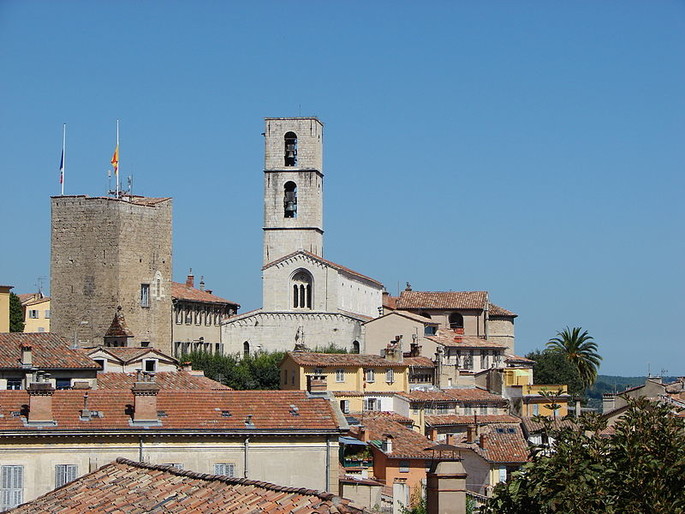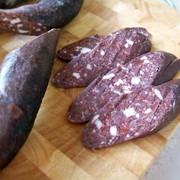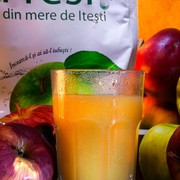Grasse is located on the old Route Napoléon, a panoramic coastal road (now marked by the road system as N85) of the French Riviera, of great importance for tourism; It is so called because it follows the path that Napoleon Bonaparte followed at the return from Elba in 1815. Its historic center, has always benefited from the mild climate of the Mediterranean, protected from the slope of the Alps. The old city, as it is called here, is admired for its structure of medieval village, a mixture of picturesque streets, complete with Provencal style houses, arcades and small stairways; still seems to breathe the atmosphere and ancient deeds of the local merchants, but also Italian (given the great success of the trade with the Florentines). You have to get to the big terrace on top of the village to admire the beautiful view across the countryside of Grasse, a vast expanse of flowers; perfect testimony of the Provencal tradition. The natural sunlight in Grasse becomes something indefinable, a mixture of light and dark that makes this place even more attractive.
Historical monuments
Saracen Tower: 30 m high, square, old watchtower.
Town Hall (former bishop's palace):
the monumental freestone door of the Town Hall, atop the coat of arms of Grasse, leads into the courtyard where stands the fountain topped by the statue of Rabuis representing Grasse allegorized. On the right, you can admire the highly conserved facade of the former Episcopal palace. Basically, a discreet garden offers a panoramic view of the city center. Inside the town hall, in the lobby, two arches of the twelfth century are remarkable, like the private chapel of the bishops of Grasse (XII century) on the second floor, transformed today in marriage hall. When the bishop was removed in 1790, the building became Town Hall.
Perfumeries:
essential step in visiting Grasse. Three of them, Fragonard, Galimard and Molinard open their doors to the public and offer free guided tours to explain the perfume manufacturing processes. It is possible to create one's own perfume or cologne and participate in all stages of its production from the collection of flowers to the setting of the perfume in the bottle.
Galimard Perfumery,
established in 1747 by Jean de Galimard provided the Royal Court with ointments and perfumes. It is the third oldest perfume company in the world and was revived after the war by Gaston de Fontmichel and Joseph Roux.
Molinard
was established in 1849 and their perfume bottles were made of Baccarat crystal and Lalique glass. Clients can create their own personalized perfume during the Tarinology fragrance course workshop.
The Fragonard Perfumery
was established in 1926 in one of the oldest factories in the city. Its museum Fragonard Musée du Parfum displays rare objects that explain the history of perfumery, covering 5,000 years.
Villa Fragonard Museum-Museum Fragonard (Grasse):
a museum dedicated to the painter created at the initiative of François Carnot with the help of his Fragonard company. The Fragonard museum in Grasse was intended to be the regional museum that was lacking in eastern Provence. The Clapier-Cabris hotel, vandalized and destroyed for a century was patiently and methodically renovated and filled with many treasures by many enthusiastic contributors. Inaugurated in 1921, the museum, despite its name,has not exposed any of Jean-Honoré Fragonard's paintings for over twenty years. Today he owns thirteen most varied. The museum features replicas of four paintings he painted for the Comtesse du Barry. The staircase has a trompe-l’œil, that the son of Fragonard, the young Alexander, would have realized at the age of 13.
International Perfume Museum:
opened in 1989, the museum traces the evolution of techniques and the 4,000 year history of perfumery to which Grasse has contributed. It was renovated and enlarged (doubling of the surface) between 2007 and 2008.
Museum of Art and History:
is located in the Provence villa Clapiers-Cabris, home of the Marquise de Cabris and presents the history of Grasse and its region. An Appendix to this museum, located in the right street, contains costumes and Provencal jewelry eighteenth and nineteenth centuries
The Navy Museum:
The ground floor of the Villa Fragonard hosts since 2007 the Navy Museum, formerly located Hotel Pontevès. This museum dedicated to the life and career of a great sailor of Provence and his companions, Francis Joseph Paul Comte de Grasse (1722-1788). Thirty models of ships are exhibited in the various rooms in the garden ground.
Bronze statue of Admiral de Grasse :
located on the course Honoré Cresp of the sculptor Cyril Patellière, inaugurated October 10, 1988 in the presence of Hervé de Fontmichel, Mayor, of Count Bruno Deydier Pierrefeu representing the Cincinatti, the Prince Louis de Polignac, the Marquis de Grasse, the Vice Admiral Duthoit, maritime prefect.
The field of Manon:
grows roses and jasmine.
The garden of Princess Pauline:
has the name of Napoleon's sister, who stayed in the city in 1807-1808 and fond of this garden
Provencal Museum of Costume and Jewellery:
presents a private collection (dependence of the Fragonard perfume) who visits the delicate world of female dress in the eighteenth century.
Religious buildings :
Grasse Cathedral.
The cathedral presents numerous paintings including three magnificent Rubens, a Fragonard (The foot washing), a Charles Negro, a Gaillard, a Sébastien Bourdon, etc ... and many anonymous representing the bishops of Grasse. The cathedral has 6 windows and four statues of Baillet representing the four Evangelists: St. Matthew, St. Mark, St. Luke and St. John.
The Church of Plan de Grasse:
built in 1753, is dedicated to Sainte Hélène.
The church of Placassier, built in 1644, is dedicated to St. Pancras.
Church Notre-Dame-des-Chenes (Magagnosc)
And several other churches.
Chapel St. John Anglican,
inaugurated in 1891. This building was donated in 1970 to the Reformed Church of France.
Cultural events and festivities
Grasse organizes throughout the year, but especially during the touristic season, events, exhibitions and congress, very focused on the perfume or local traditions.
The Jasmine Festival
takes place in early August. It attends parades of floats, marching bands, fireworks and cultural performances on the theme of theJasmine flower. In total, 150,000 flowers are used for the festivity. The first edition of this popular tourist festival took place in 1946 and the prince of parades date from 1948.
The Exporose
or international roses exhibition takes place in May. It attends exhibitions of roses of all types, markets, sales, city tours, shows and competitions around the theme of the Rose. It exists since 1972.
Bio Grasse
takes place in early September. There is a market for organic products and events and exhibitions on organic farming, sustainable development and ecology. The first edition in 1996.
Olivea
takes place in June. This is a show that is home to markets, competitions, exhibitions, debates, events, conferences ... around the theme of olives, but also all the local Provencal traditions.
Vénusia or international Cosmetology Congress
held in April at the Palace of Congress and present lectures about the beauty and perfume.
The Centifolia Congress
in October since 2001. It aims to present the perfume industry through conferences, the first economic sector of the city and for which a cluster has been labeled.
The International Symposium aromatherapy and medicinal plants.
The Didascalies Festival
takes place in spring, usually in May. It's a school theater festival that brings together nearly 20 troops (300 actors), 10 500 visitors each year. Created in 1990 by the Fenelon Institute, the festival welcomes beside local troops, several foreign troops who make their representation in French. Despite the difficulties, the organizing team refused (with the support of students of the festival's major troop) to be limited to a Franco-French festival. Until 2011 troops competed to win the challenge. However inequality between troops forced the association to close the challenge and make the festival a friendly meeting around the theater. Major forces are those of the Fenelon Institute (which has more than 500 actors, workshops for primary education in high school BAC theater option) and the class of the school St Jacques.
The Festival "The very first times"
is a film festival established in 1998 which takes place each year during one week in April. It is organized by the association "Cinema with Grasse Perfume", born in June 1997. During the week, there are particular broadcasts of feature films and a short film competition, awarded with a prize, the Gold Jasmine. There is also a video production contest, awarded the prize of Golden Lavender. Finally, meetings are planned between the public (including school) and film professionals.
The town is the setting in the final chapters of the novel Perfume by Patrick Süskind. It was also featured in the film based on the novel Perfume: The Story of a Murderer (2006).
[Next week an article about the perfumery of Grasse]
























